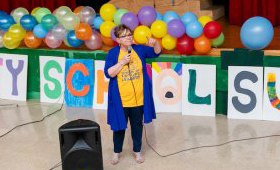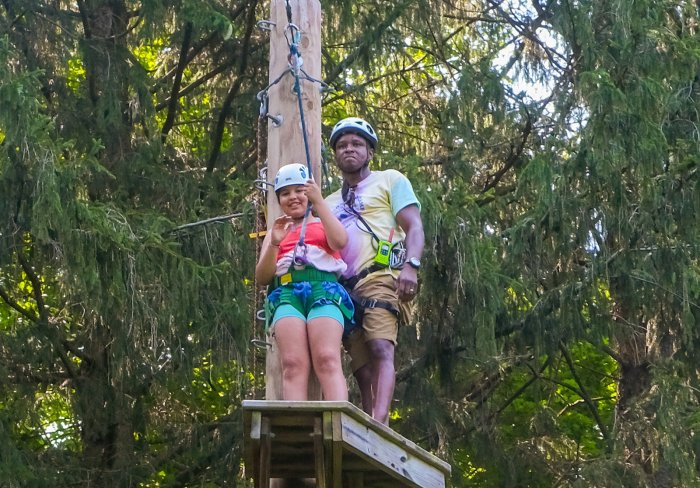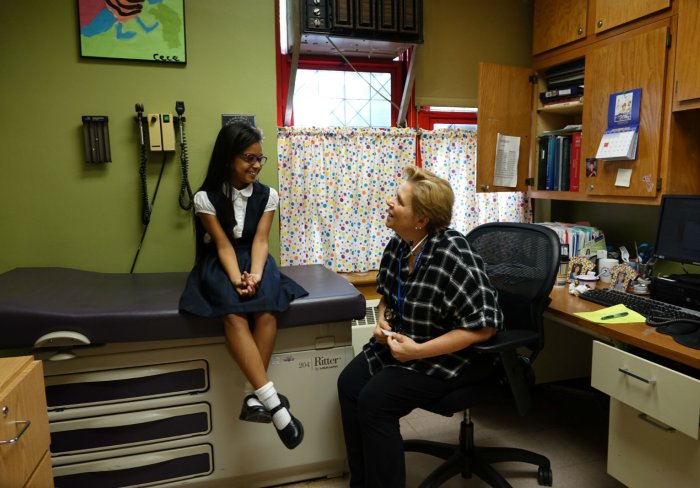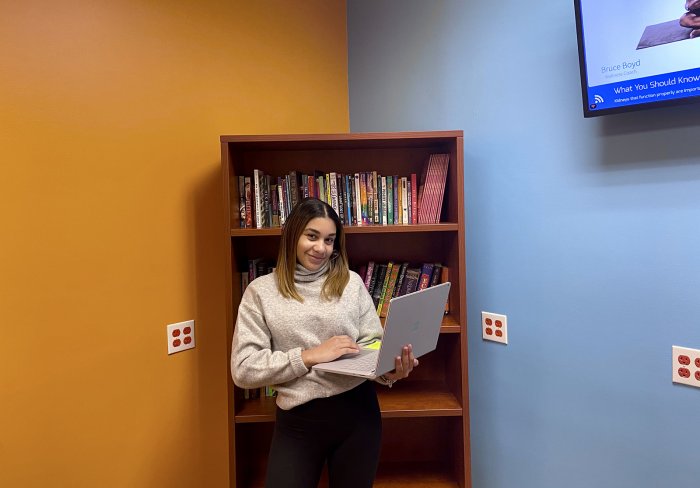As a child, Abe Fernández dreamt about leaving the Bronx.
“Like a lot of Bronxites, I was looking for every opportunity to get out,” he said. “I saw it as a personal mission. To me, the sign that I’d succeeded in life would be that I left.”
In some ways, Abe’s family story was a familiar one within the borough. His parents were immigrants from the Dominican Republic who moved to New York City in pursuit of the American dream. His father worked as a cab driver and then a building superintendent while his mother raised the children and later operated a home daycare.
It didn’t take Abe long to recognize that his family didn’t have very much money. He shared a small apartment not only with his parents and four siblings, but also with an ever-shifting cast of family members who were also hoping to find a better life in New York.
“I give my parents a lot of credit,” Abe said. “Despite not understanding the system and despite not speaking English very well, they were pretty scrappy. They found a lot of opportunities for themselves and for us as children.”
Beginning in fifth grade, Abe got involved with an educational nonprofit that helped pave the way for his lifelong academic success, which culminated in attending an Ivy League for college.
It was during his time at Brown that he began to learn the reasons why his home borough had felt, at times, so hopeless. For a visual arts class project, he decided to combine an art form that had always fascinated him, graffiti, with one that was more aligned with the feel of higher learning institutions, lithography. A fellow student critiqued it as being out of context.
“My response was: ‘I’m out of context,’” Abe said. “Here I was, this brown kid from the Bronx in an Ivy League institution. That conversation really awakened this interest in me to understand more about graffiti’s place in public art, which put me on a path to understanding public spaces and investments.
“Everything is designed by someone, and therefore it can be redesigned,” he said “I got really interested in playing a role in that redesign in the Bronx.”
In high school and college, he volunteered with a nonprofit called Summerbridge that ignited a passion in him for teaching. After graduating, he spent three years working primarily at Riverdale Country School. “It was an ideal environment for teaching and learning, and it was in the Bronx, but it didn’t feel like I was in the Bronx,” he said. “I wanted to get closer to the action.”
He took a job at Union Settlement, a community nonprofit set within a public housing development in East Harlem. Within six months, his boss had left, and he went from running a program to leading an entire division.
“I went from knowing just a little bit to having to figure out programming for ages 2 to 24,” Abe said. “One minute I was writing a multi-million dollar grant proposal, and the next I was taking out the trash.”
In 2003, he joined Children’s Aid as an assistant director of the Community Schools division and was charged with starting up two new community schools back in the Bronx. Before applying for the job, he’d never heard of community schools. But as he learned more about the model, he was enthralled.
“Community schools brought two parts of my life together,” Abe said. “On one hand, a real interest in teaching and schools. And on the other hand, an authentic orientation toward communities. What I’d been theorizing about in my own mind, it was happening here at Children’s Aid.”
He soon joined our National Center for Community Schools, which helps to start and support community schools across the country. “I fell even more in love with the idea of community schools when I started to understand more about the strategy and the history behind them,” he said. “This isn’t just about putting a bunch of programs in a school and letting things happen by chance. It’s an intentional strategy to connect resources and empower communities.”
His life and career came full circle when he launched our collective impact work in the Bronx, bringing together the strength and resources of his home borough to get the kind of results for children and families that have been lacking there.
When Abe gives talks now, he often reflects on the fact that his life, from one perspective, looks like a success story. He went to an Ivy League institution and is now in leadership at one of New York’s largest nonprofits. But he sees it as a story of failure.
“There are 29 other kids in my fifth-grade class who didn’t get the golden ticket that I did,” he said. “That’s not a strategy. That’s a game that was designed by people who didn’t look out for the future of all kids. I’m interested in a different way of thinking.”
That focus on outcomes is something he believes he learned from his parents.
“My parents brought a level of purpose to their lives, which ended up bringing purpose to our lives,” Abe said. “They said: We didn’t get the opportunities we were owed, but we can make sure that you do. That’s how I feel about my own kids, and it’s how I feel about all kids in the Bronx. I credit my parents for making that possible.”







